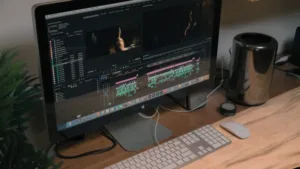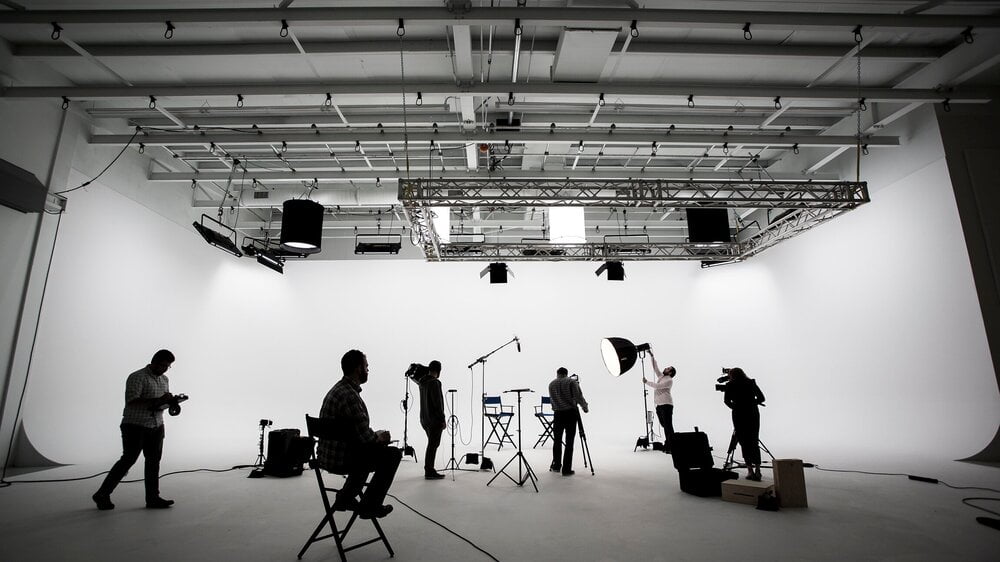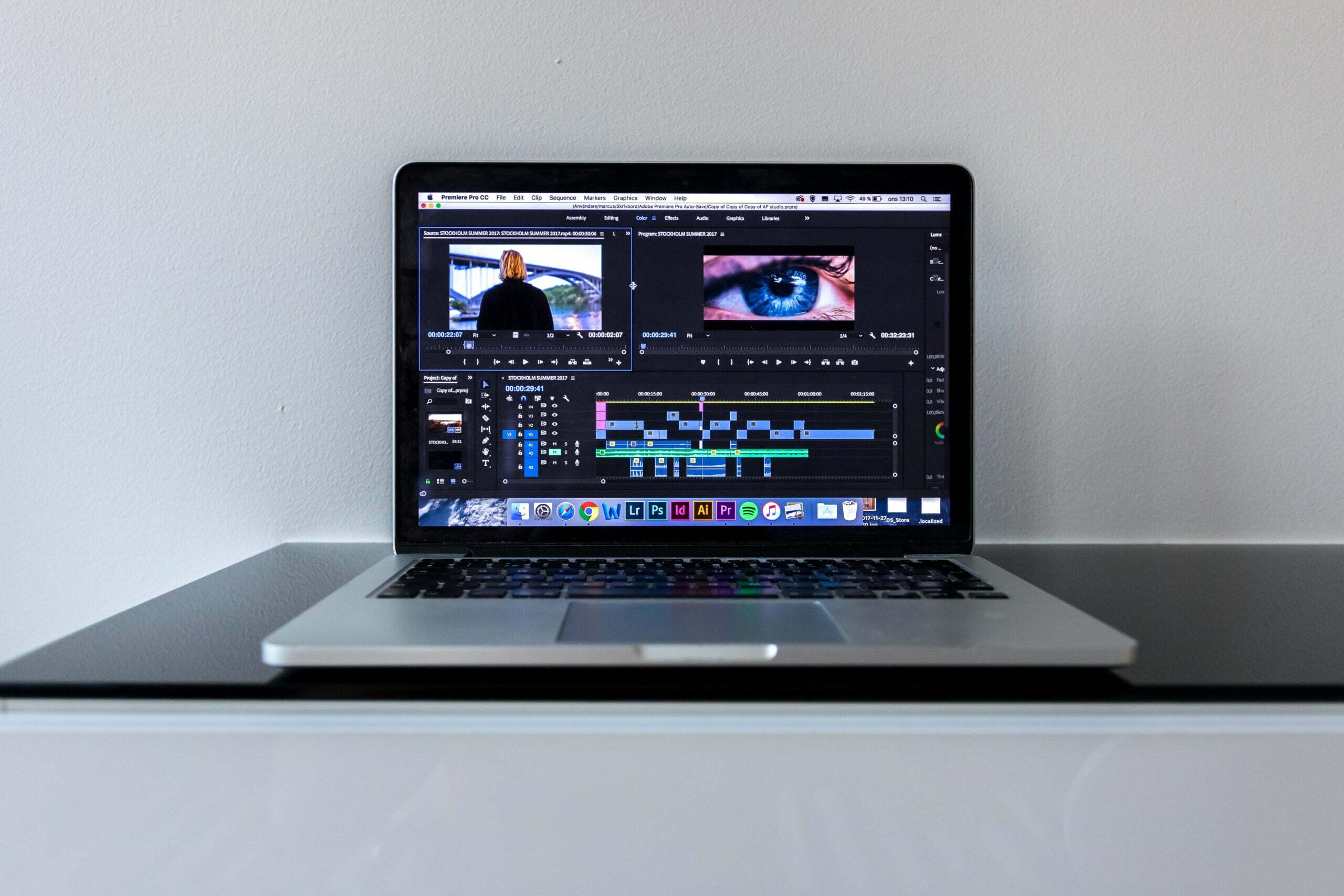What Are The Steps Of Video Post-Production?
After bouncing around tech start-ups and university literature programs, Joe has finally settled down as Billo’s Head of Content. Joe now spends his days writing ads about ads, teaching clients how to craft killer content, and combing through our web copy with a bold red Sharpie.

The post-production process is the third and final stage of creating videos. When you’re done shooting your footage, you have to apply some finishing to it; this is included in post-production.
This step involves a whole host of professionals, both individuals, and teams. These people range from sound professionals, color grading experts, editors, and voiceover actors.
What is Post Production?
The Video post-production process is the last step of the video creation process. Post-production also involves the footage post-production editing phase as well as adding sound to your footage.
How Does Pre-production Differ from Production and Post-production?
Pre-production and production, respectively, are two stages that preceded post-production. All the steps are necessary to create a clean, well-polished video successfully. The key difference is in the order they take place. Pre-production and post-production do not require taking more footage. Let’s look at what each of the steps entails.
Pre-production
This is the first phase, and it is typically referred to as the planning phase. Pre-production is done before the shoot even begins.
The human resources acquisition also takes place at this stage. All the actors and other professionals like cinematographers and set designers in the video creation industry are hired. Locations are also chosen at this stage. Makeup creation is also planned out in this stage.
What Does it Involve?
This stage is the most important for smoothing over the video creation process. At the end of the process, the following should have been accomplished:
- Financing and insurance
- Scripting and creation of a storyboard
- Deciding on a location
- Hiring actors
- Creation of costumes and the necessary
Who are the People Involved?
This stage lays out the groundwork for the rest of the project. It involves casting directors to hire actors, location scouts to find locations, producers to tie the project together, a director to lay out the vision of the film. They also get cinematographers to create the feel and the look of the film.
Production

This is the shooting phase and takes place in real life. The process involves filming scenes live on location. The shot film is typically shot each day and then saved to be worked on later. Larger projects will typically shoot the footage for the day and send it off to the post-production team.
They film ahead of the sound mixing and other processes to create a canvas others will work on. This is exactly how major picture companies film their pictures. The key here is to get all the camera angles they need.
What Does it Involve?
Filming scenes live is the primary activity in the production stage. On location, sound recording and the voiceover actor’s recordings can also be done in this stage. Reshoots also typically happen at this stage in case the director or producers need new footage.
Who are the people involved?
All people needed to facilitate the creation of the footage. This involves the cinematographers, the directors, the actors, and the people involved in audio recordings. The costuming and makeup team and the stunt team also work to ensure the actors look good doing their craft.
How does Film Post-production work?

This production phase will dictate the final feel of the content. The film is put together and modified with edits to carve out the final look. Post-production means all the add ons that will take place after the footage has been captured. Here is where the film takes shape.
Sound is added to the content at this production phase and adds a new dimension of sound; this gives the final feel behind the creator’s vision. Afterward, the film is ready for final delivery and presentation. Picture editing is the bulk of the process.
What Does Post-Production Involve?
The film is altered in this stage to create the final image. This involves color grading and correction as well as post-production editing video footage. Visual effects and animation are also added to the footage and polished to be a level that can be published. Post-production is important to the producers as most of the decisions take place on the floor.
A lot of sounds also come in, in this stage; post-production involves recording, sound mixing, adding the soundtrack, and script sound recording. Editing and post-production are essential to the overall outcome of the project.
Who are the People Involved?
Various artists are involved in post-production are shaping the project to its final form, including composers, visual effects artists, animators, editors, both visual and sound. Sound Mixers, editors, actors, and the music and soundtrack artists are also heavily involved in the video content creation. Picture editing in the form of color grading and color correction also takes place in this stage.
The 5 Stages of Video Production
The film post-production process is a complex process requiring the input of people of various disciplines, often numbering in the hundreds. It requires a lot of coordination, and the result is video content in the final form as envisioned. It can be broken down into 5 separate stages to be better understood.
1. Keep a log of your footage
Before even beginning this process, it is important to make sure all your raw footage is clearly labeled before progressing. This makes sure the raw footage, an important component of the post-production, is available in top shape for further processing. The process should take a couple of days, depending on the length of the footage.
2. Assembling of the Footage
This is largely thought to be the start of the video editing process, a significant part of post-production. They study all the footage that was collected in the production stage, and all the unwanted footage is done away with. This includes footage with misread lines, outtakes, shots ruined by people in the background.
The related footage is collected and cut up into relevant packets and saved in its folders, and labeled accordingly to make them easier to access in the future.
This stage can typically take days to finish up. The useful raw footage is then placed on a timeline, and the vision of the project starts to take its final shape in post-production.
3. Creation of a rough edit
This involves creating a version of the film with incomplete assets. Depending on the number of editors involved, this filmmaking process can take up to a couple of days. Final shots are chosen and put together without the final products getting cleaned up.
This cut will then have sound effects, music, and clear voices added to the rough cut, creating a blueprint for post-production. This helps visualize what the final product will look like after the whole filmmaking process has come to an end.
4. Creation of the fine cut
At this stage, editors go through the rough cut, looking at each frame and eliminating the more obvious mistakes in the film. All the frames are perfected to have the video presentation-ready with all the sound effects and the visual effects being ready for presentation. This is done in post-production.
5. Creation of the final cut
This is the last stage of the post-production filmmaking process. All the remaining work is done and involves final visual effects, motion graphics, and the final touches of the color grading and correction are done. These features are added in post-production.
All the sound effects, color grading, and visual effects should be in their final form, complementing other aspects of the film.
A Dive into the film post-production Process
The film post-production process is a multi-stage process that requires the holistic efforts of teams to create a product that is finished and ready for presentation. Here are the activities involved at each stage:
Format of the Edit
The first step of shooting will involve picking a format to shoot in. When shooting a large project, you will have a lot of footage. There is a need for a lot of storage to store all the raw footage, which will be determined by the format you pick. Check available storage on your device to determine if you have enough.
The format of the edit is typically different from the final form. This is because raw footage is required in the video editing process. Working with the uncompressed image data will give the best results.
The final process can then be compressed into a smaller file size that can be easily stored and sent to post-production.
Video Editors
All editors need video editing software to cut up and rearrange their raw footage. Adobe Premiere Pro is one of the most commonly used for its effectiveness in post-production. The decision on the software of your choice is important. With the help of customized video editing services, creators can optimize their editing tools to suit specific workflows and preferences.
The final choice of the editing software you will use is largely dependent on your personal preference. You still have to consider the different add ons and features as well as the software interfaces because they all function differently. Nearshore software development services can help customize editing software to better match individual workflows and creative needs.
It can help to lay the entire video into a strip which you can cut out the frames you do not want and stitch the frames you would like to stay on. Most editing software is perfectly capable of post-production.
On Video Editing
Once the footage has been spliced and stitched, creating a narrative you are happy with, the project is ready to move to the final stage of the post-production process. This is where the sound and the image are tuned to match the final image of its directors.
Color grading and correction
This involves altering the color palette of each frame to change the overall look of the video. When shooting, prevailing conditions on location can change the lighting picked up by the camera. Color grading and correction can also be used to match the directors’ artistic choices.
The process saturates certain colors while processing some images through certain filters to improve their look. This allows for a more consistent look throughout the film and improves the general look of the film. This is the mark of skillful editing.
Visual effects
Today’s movies feature the biggest mind-blowing characters, not limited to monsters, aliens, and the like. These are things that do not exist or would otherwise be prohibitively expensive to build or create. This is where the special visual effects come in; they can bridge the gap between the creators’ vision and what is possible.
They can also help create backgrounds typically of fantastical backgrounds through a green screen. They can also touch up footage to give it an edge that seems more realistic or furthers the directors’ goals.
The credits and main titles
The elements at the beginning and the end are then added. This involves the creation of the graphics to add there. Crucial decisions on the language and subtitle have to be made.
Sound Editing
Having good audio can elevate the film as it can give much-needed context. This involves adding all the sound effects and other audio assets into the film. Adobe premiere pro helps sound editors elevate the film.
Automate Dialogue Audio
This is where the screenplay is recorded in a booth, and the audio is stitched on the final cut. The audio recorded on location can be of poor quality, making it hard to hear, resulting from prevailing weather conditions on set or even faulty equipment.
After the actor’s record in a booth, the final edit is synching the words on the ADR and the lips of the footage. Sound editing with adobe premiere is used to stitch the words filmed on location and in them both.
Foley recording
The teams here are involved in creating the sounds that make the world feel fuller. These people create sounds such as footsteps, motorbike engines, ambient forest noises, and the like. They record these noises in a studio where necessary.
Music and sound effects
In this step, a composer will add music to elevate the video. Background music is added to the film to complement the content where needed and deliver the director’s intention. All this is done by sound editors.
Sound mixing
Here, the artist adds all the film’s audio, from the background music to the special effects. They then modulate all the elements so they can all be heard. They make sure all the audio complements and elevates the films, supporting the artistic vision of the directors.
Making graphics
Having more fluid graphics to ease with scene transition will give it a more premium finished look. Afterward, the film’s final version is ready for delivery.
Creating a Trailer
Trailers are very important in creating excitement in the work you have done. A trailer is a short collection of clips from your video to highlight some of the most exciting bits of your video. Typically, a trailer editor would make a video that excites while communicating the tone of the video.
Trailers are common for projects with a big launch of the final version. They help advertise it as well as create a buzz with some stakeholders like distributors and financiers.
Head of Content
After bouncing around tech start-ups and university literature programs, Joe has finally settled down as Billo’s Head of Content. Joe now spends his days writing ads about ads, teaching clients how to craft killer content, and combing through our web copy with a bold red Sharpie.

Authentic creator videos, powered by real performance data
22,000+ brands use Billo to turn UGC into high-ROAS video ads.
Smarter Video Advertising Analytics: 10 Metrics ...
The gap between ad spend and insight is closing – [...]...
Read full articleHow to Create and Execute a UGC Video Marketing ...
Video is one of the most effective ways to connect [...]...
Read full articleBest Alternatives to Influencity
Influencity is a popular platform for managing influencer campaigns, but [...]...
Read full article



